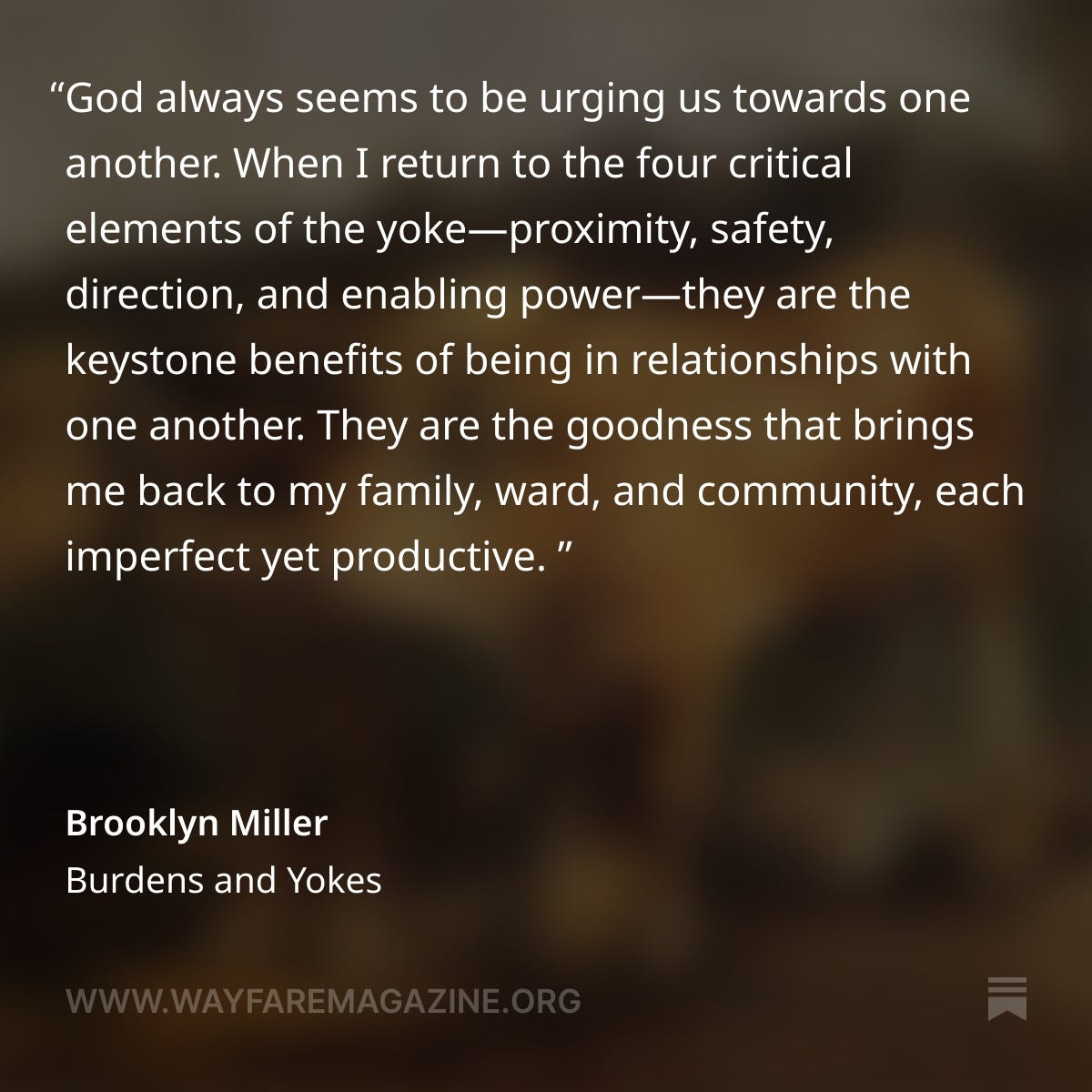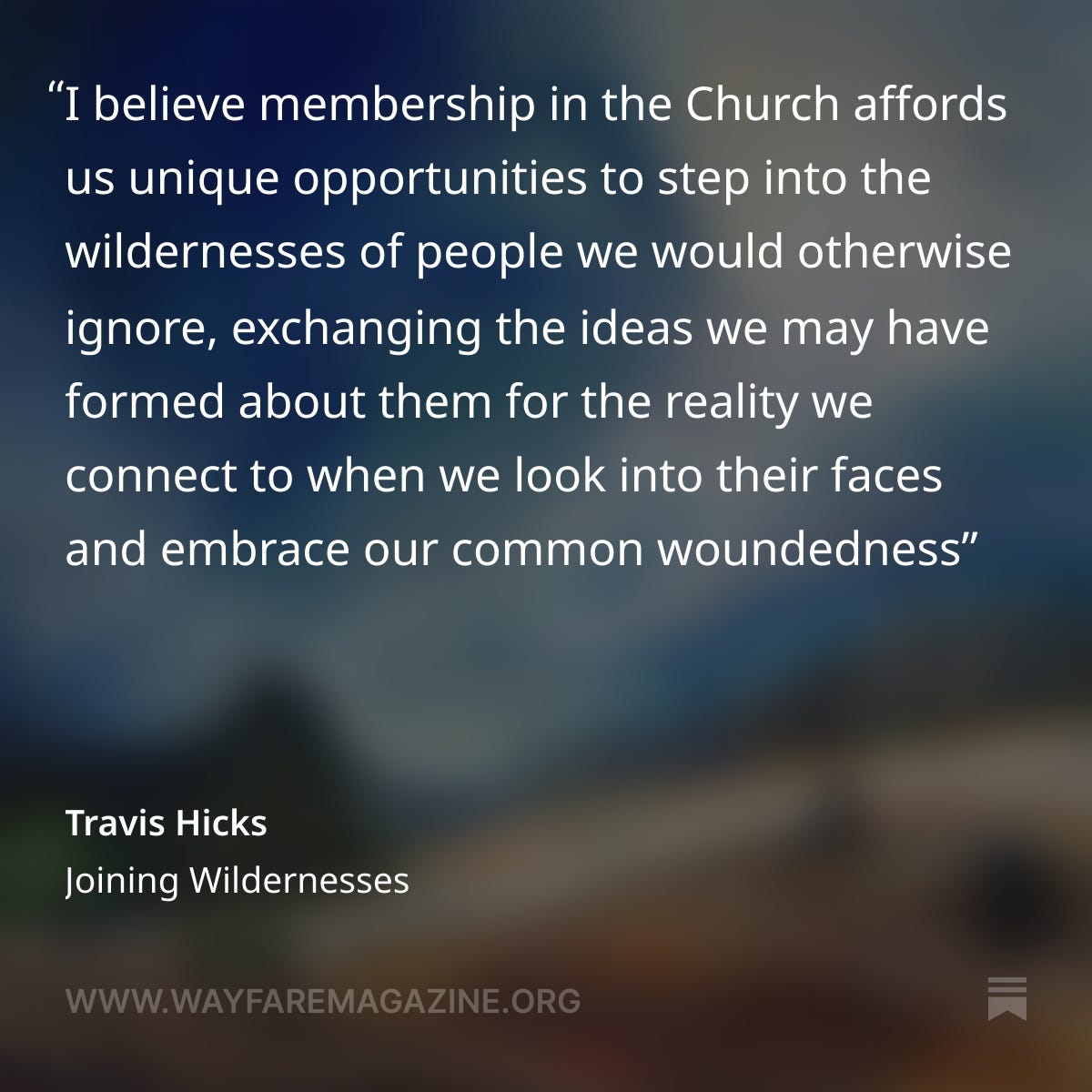Why wards? Why Church?
Faith Matters resources to accompany your Come Follow Me study: October 13-19
The name of the Church is important to the Lord.
In what way is our Church "the true Church"?
The assertion made in D&C 1:30 that the Church of Jesus Christ of Latter-day Saints is “the only true and living church on the face of the whole earth with which I, the Lord, am well pleased” is a classic two-edge sword.
Zion and her stakes offer “refuge from the storm.”
Latter-day Saint apostle John A. Widtsoe taught this principle in 1943 amid the ravages of the Second World War, when peace truly had been taken from the earth. He instructed the Church, “Each individual . . . holds in his own hands the peace of the world. That makes me responsible for the peace of the world, and makes you individually responsible for the peace of the world. The responsibility cannot be shifted to someone else. It cannot be placed upon the shoulders of Congress or Parliament, or any other organization of men with governing authority.” Peace can’t simply be something that other people pursue on our behalf.
—Patrick Mason, “Just Ward Theory”
In the nineteenth century, Latter-day Saints were called to build up communities together “for a defense, and for a refuge from the storm, and from wrath when it shall be poured out without mixture upon the whole earth” (Doctrine & Covenants 115:6). Whether we imagine the unfolding age of disasters as coming from a just God or as the natural consequence of a long culture of extraction and exploitation, we are now facing an objectively verifiable global peril. To be a Latter-day Saint in the twenty-first century then, means to answer that old call. Brothers and sisters in a global faith must stand together as the world warms. In such a time as this, let’s open the storehouse—using our traditions, our institutions, and our culture as resources to help save lives and salve souls.
—James Goldberg, “Faith and the Face of the Storm”
My sacrifices are sacred to the Lord.
When you choose to give your life as a body for Christ’s spirit, you will find that pieces of yourself will die along the way. But you will also see those pieces resurrected, now filled with God’s spirit and put to their proper use. The perfection that God has in mind for you isn’t a neutered, amputated, lobotomized sterility, where pieces of your spirit and body have been turned off. Christ wants all of you. This will not be a movement toward a uniform cookie-cutter image of pious, bland, sameness. Instead it makes each of us more fully and uniquely and eternally ourselves.
—Bob Sonntag, “The Sacrifice of All Things”
What God calls beautiful is not only the expertly-performed Bach prelude, but the toddler running to his nursery teacher with arms outstretched, a loaf of bread baked for the sacrament by one of the high priests, that one Sunbeam yelling every song in the Primary program, the surreptitious passing of tissues during testimony meeting, a stack of variously shaded and wrinkled hands laid together to give a blessing, the endless passing of signup sheets to help with moves, rides to Girls Camp, chapel cleaning, the sacrament of ham and potato casseroles after funerals. We build our part of Zion with wood and stone and mud, and then God promises to restore our wastelands and make our feeble gifts worthy of his habitation—he will, in Isaiah’s words, lay our stones with fair colours, and lay our foundations with sapphires, make our windows of agates, our gates Salvation and our walls Praise.
—Kristine Haglund, The Beauty of Holiness
My tithing helps build the kingdom of God.
Aaron Miller: The $100 Billion Question
Though the Church hasn’t publicly disclosed the value of its assets, estimates place it at over $100 billion — put in context, that’s about double the size of Harvard’s endowment, making the Church one of the wealthiest religious institutions, or non-governmental organizations of any kind, in the world.
The questions this raises are clear: how did the Church acquire this much wealth? Is it reasonable to see assets of this size as a “rainy-day fund,” even for a religion with a name attesting that we live in the last days? Is tithing simply “God’s money” and a matter of faith alone, or should members have insight and transparency into Church finances, and how their donations are used? And of course — what good could be done in the world with $100B or more?
We felt like it was the right time to explore these questions on Faith Matters, and we brought on Aaron Miller to help us sort through some of them.
Grant Hardy: Tough Love from the Book of Mormon
We loved talking with Grant, and for us, some of the most powerful moments of the conversation were his reflections on how the Book of Mormon is calling us, as a people, to hold up the mirror and ask what we can do better. You’ll hear Grant specifically bring up the topic of how we as a church use and disclose our financial resources. We want to note that this part of the conversation is challenging—and while the views Grant shares, like those of all guests we have, are his own, we really appreciate his vulnerability and willingness to engage these tough issues. We know not everybody’s going to agree on this, and we’re very aware of our inadequacy in navigating difficult topics. We hope that one thing we can do at Faith Matters is to help keep conversations going in good faith, and that’s what we tried to do here, however imperfectly.
My example can help others come to Christ and find safety.
What if joy is what results when we join our wilderness to others’ wilderness, or rather, our sorrow to others’ sorrow? Does this not sound like Lehi’s teaching that we can have “no joy, [if we know] no misery” (2 Nephi 2:23), or Elder Uchtdorf’s teaching that “joy and sorrow are inseparable companions”? What if the substance of joy is not pleasure and delight but a community’s combined sorrows?
If that’s the case, then doesn’t this type of joy sound more like the life Jesus lived? President Nelson taught that “Jesus Christ is joy!” Yet Isaiah called him, “a man of sorrows, and acquainted with grief” (Isaiah 53:3). What if the fact that Christ “hath borne our griefs, and carried our sorrows” (Isaiah 53:4) is the very reason that he epitomizes joy? Perhaps, then, to say that the gospel brings joy doesn’t mean, as I once believed, that it acts as a cocoon, nor does it mean that the gospel will always tip our scales toward happiness over sorrow. Maybe a joyful life isn’t a life unfazed by hardship but a life of embracing hardship, or, as Elder Uchtdorf teaches, a life “of yoke-bearing and burden-lifting.”
—Travis Hicks, “Joining Wildernesses”










